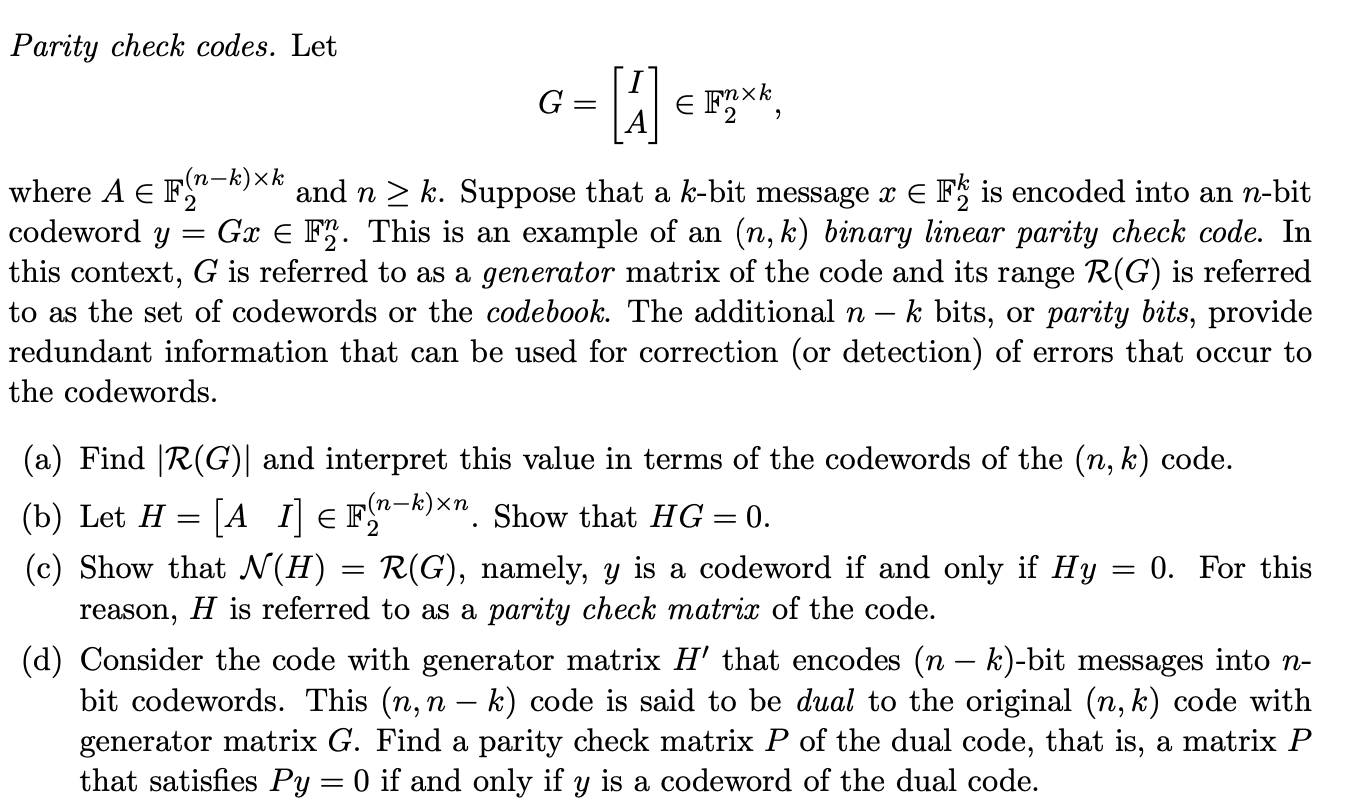Question
Parity check codes. Let I nk G=AF2 , where A F(nk)k and n k. Suppose that a k-bit message x Fk is encoded into an
Parity check codes. Let
I nk G=AF2 ,
where A F(nk)k and n k. Suppose that a k-bit message x Fk is encoded into an n-bit 22
n
codeword y = Gx F2 . This is an example of an (n, k) binary linear parity check code. In this context, G is referred to as a generator matrix of the code and its range R(G) is referred to as the set of codewords or the codebook. The additional n k bits, or parity bits, provide redundant information that can be used for correction (or detection) of errors that occur to the codewords.
(a) Find |R(G)| and interpret this value in terms of the codewords of the (n, k) code. (nk)n
-
(b) Let H = A I F2 . Show that HG = 0.
-
(c) Show that N(H) = R(G), namely, y is a codeword if and only if Hy = 0. For this
reason, H is referred to as a parity check matrix of the code.
(d) Consider the code with generator matrix H that encodes (n k)-bit messages into n- bit codewords. This (n, n k) code is said to be dual to the original (n, k) code with generator matrix G. Find a parity check matrix P of the dual code, that is, a matrix P that satisfies P y = 0 if and only if y is a codeword of the dual code.

Step by Step Solution
There are 3 Steps involved in it
Step: 1

Get Instant Access to Expert-Tailored Solutions
See step-by-step solutions with expert insights and AI powered tools for academic success
Step: 2

Step: 3

Ace Your Homework with AI
Get the answers you need in no time with our AI-driven, step-by-step assistance
Get Started


